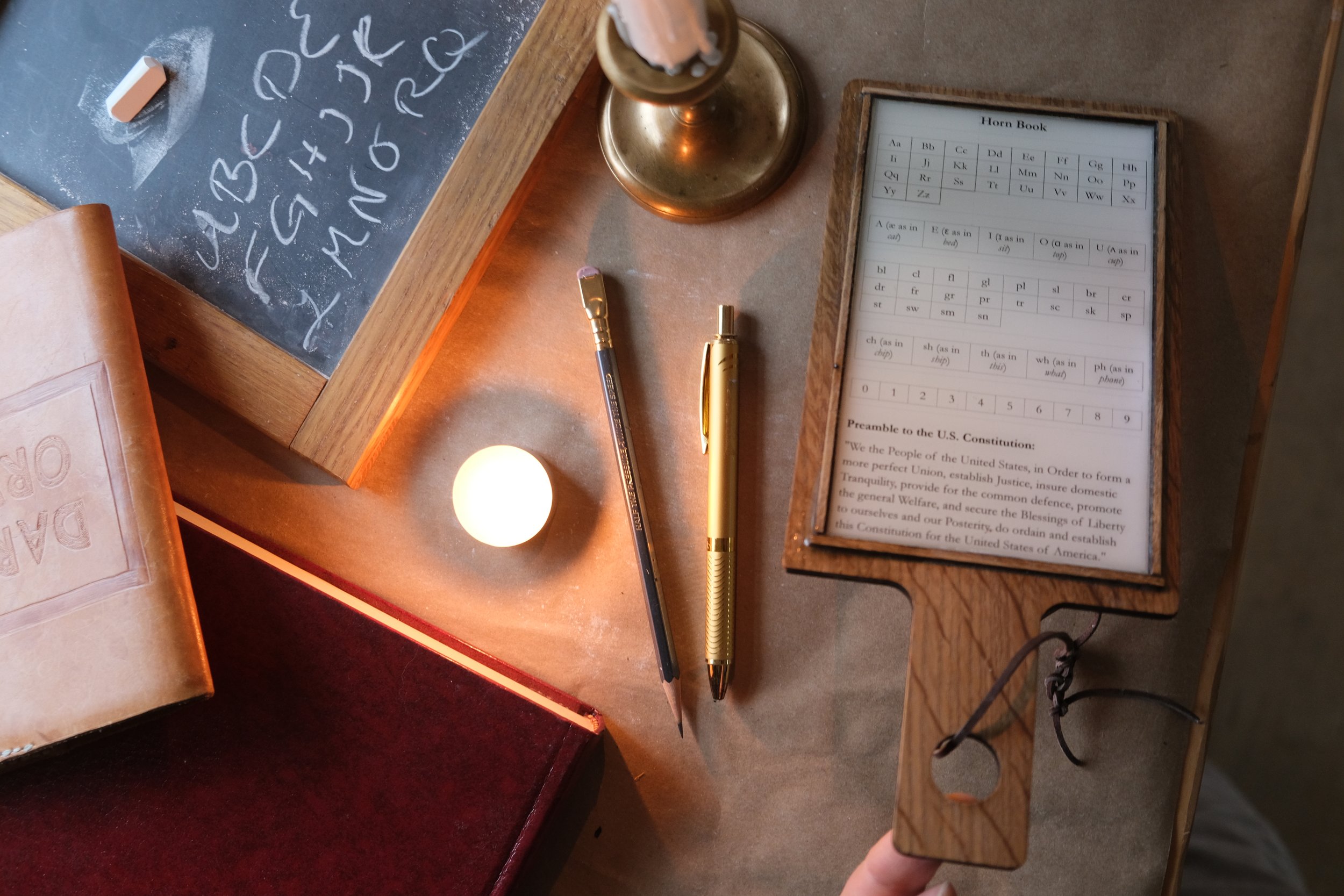The Quiet Little Tool That Taught Generations to Read
Picture this: A small wooden paddle, covered with animal horn and etched with the alphabet. For over 300 years, this unassuming tool—called a hornbook—was the gateway to literacy for millions of children.
It’s a piece of history most of us have never heard of, yet it shaped the minds of thinkers like Isaac Newton, Shakespeare, and even early American pioneers.
Today, I want to introduce you to this fascinating relic—and explore why its simplicity might hold lessons for our tech-saturated world. (And of course we’ll build one as well!)
For over 300 years, this simple wooden paddle—no bigger than your hand—taught children their ABCs. It was sturdy, portable, and focused entirely on the basics: letters, sounds, and a short text to memorize. No apps, no videos, no distractions. Just a child, a teacher (often a parent or sibling), and this humble tool.
By the middle of the 19th century, it vanished from classrooms. But as we navigate today’s world of buzzing screens and packed curriculums, there’s something quietly fascinating about how it worked.
What Made the Hornbook Special?
Simplicity: One page of essentials. Mastery came from repetition, not rush.
Durability: Covered in horn or epoxy, it survived generations of use.
Focus: In an era without distractions, learning was slow, steady, and tactile.
It wasn’t glamorous, but it built strong foundations. Wealthy or poor, many children learned to read by tracing those letters daily—including thinkers who shaped history.
A Modern Question
Today, we have more tools than ever to teach reading. Yet literacy rates lag, attention spans shrink, and classrooms feel chaotic.
This isn’t about blaming technology or romanticizing the past. It’s about asking: What can we learn from a tool that prioritized focus and simplicity?
What’s in the Video
In my latest video, I explore:
The hornbook’s quiet role in history (and why it disappeared).
Why how we learn matters as much as what we learn.
A DIY project to recreate a hornbook—no 16th-century tools required.
You’ll also see how its principles—repetition, tactile learning, minimal distractions—might still apply today.
Why Watch?
This isn’t a call to abandon modern tools. It’s an invitation to reflect.
Maybe there’s wisdom in slowing down. Maybe strong foundations still matter. Or maybe you’re just curious about a piece of history that’s been hiding in plain sight.
Either way, if you’ve ever wondered how children learned to read before textbooks (or TikTok), you’ll find this story quietly fascinating.
👉 [Watch here] to see the hornbook in action—and decide for yourself.
